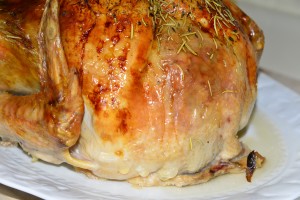In my last three articles about rotisserie chicken I explored both the good and the bad points of a rotisserie chicken.
The goods: it’s quick and ready-to-eat; if you’re a careful shopper the price is fairly reasonable; it is definitely cheaper than a restaurant meal!
The bads: nutritionally they are high in sodium; some chickens are not as large as they appear and you’re not getting the same value for a small chicken. Boneless chicken breasts could yield more meat per pound and may be less expensive when purchased on sale.
So does this mean you should never eat a rotisserie chicken again?
Couple options: someday when you’re not hungry or in a hurry, check the nutrition label and sodium content on rotisserie chicken at several different stores, glance at the net weights to compare to the price. This way, when you do want to buy one you’ll make good decisions on the size and sodium content and you can avoid those with the highest amount of sodium.
Also, remember chicken isn’t the only thing on the menu, too. Can you offset the amount of sodium by serving it with other foods that are very low sodium such as a plain baked or microwaved potato (24 mg. of sodium) and steamed-in-a-bag green beans (0 mg)?
On the other hand, how does it compare to a frozen dinner? A comparable baked chicken breast frozen dinner with mashed potatoes has 760 mg. of sodium.
Careful shopping and menu planning can include rotisserie chicken as part of your family’s meal plan.
Cheryle Jones Syracuse, MS
Professor Emeritus,
The Ohio State University


